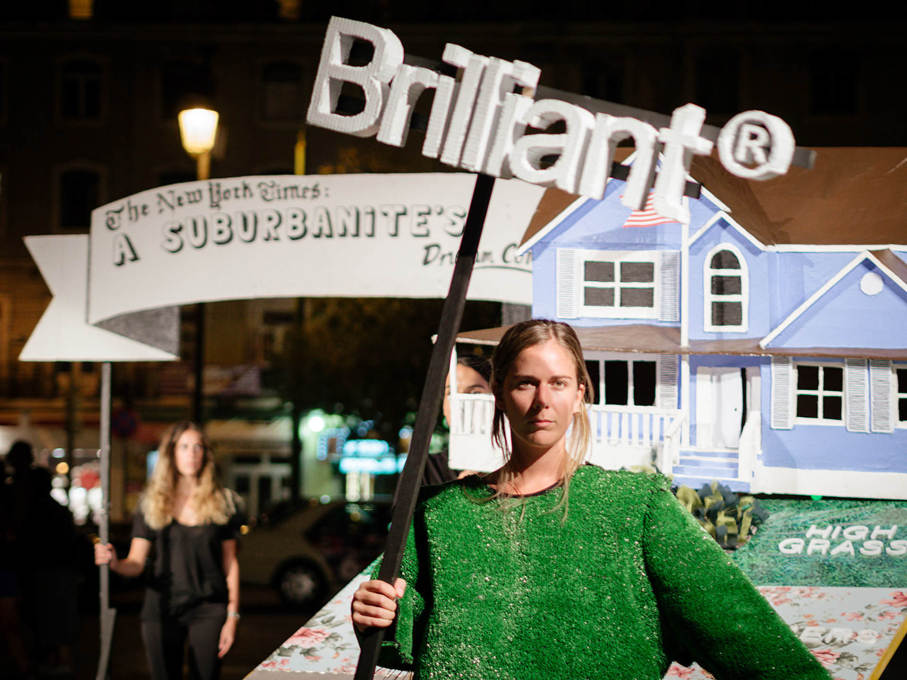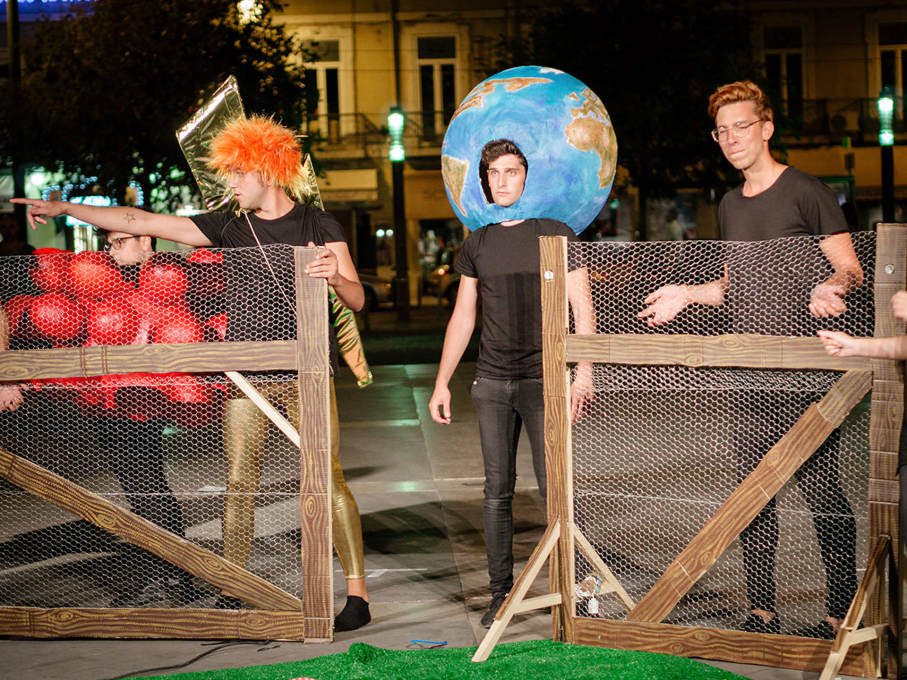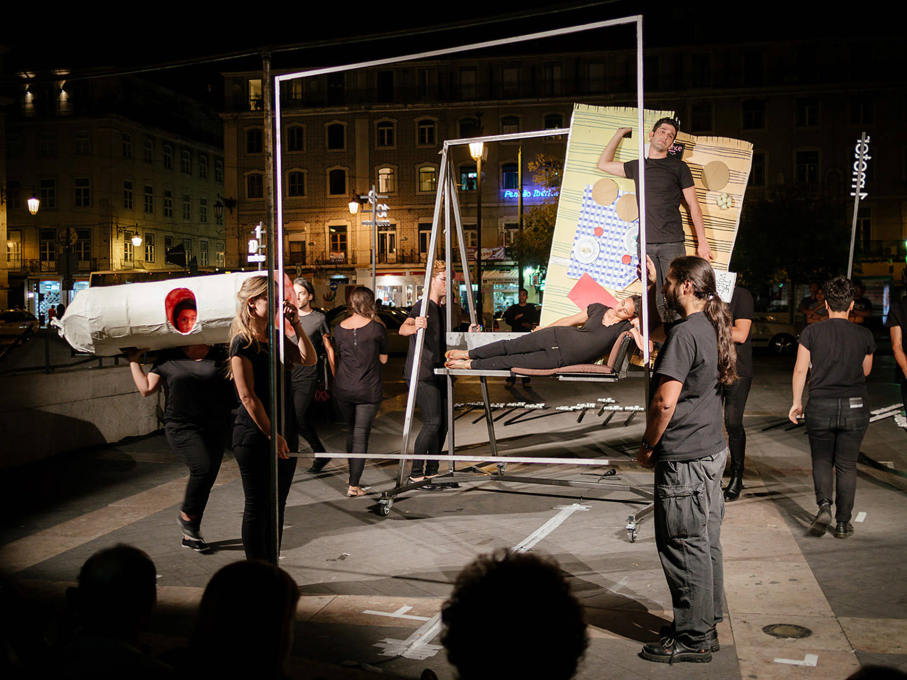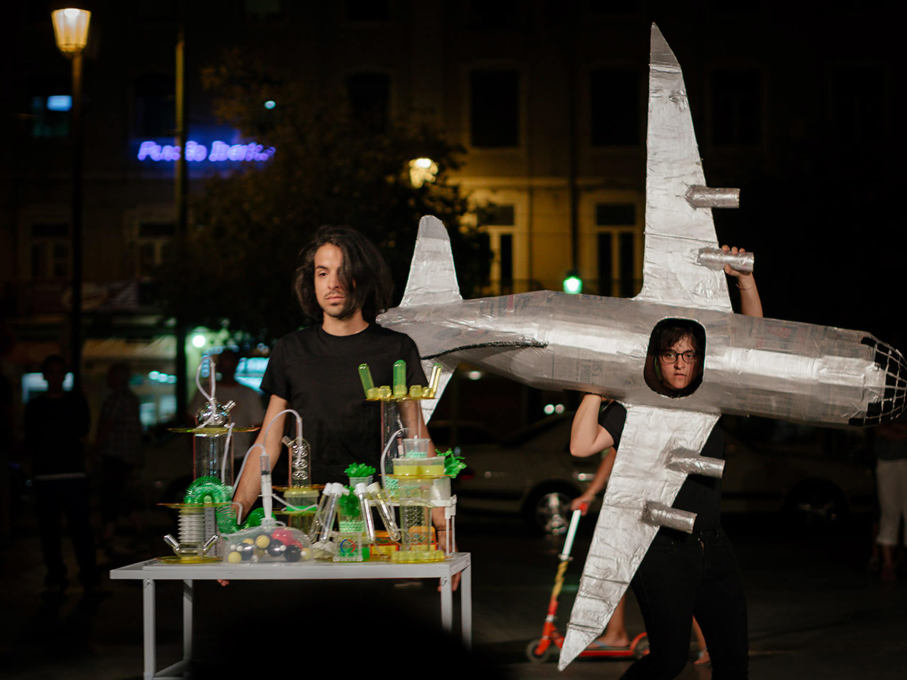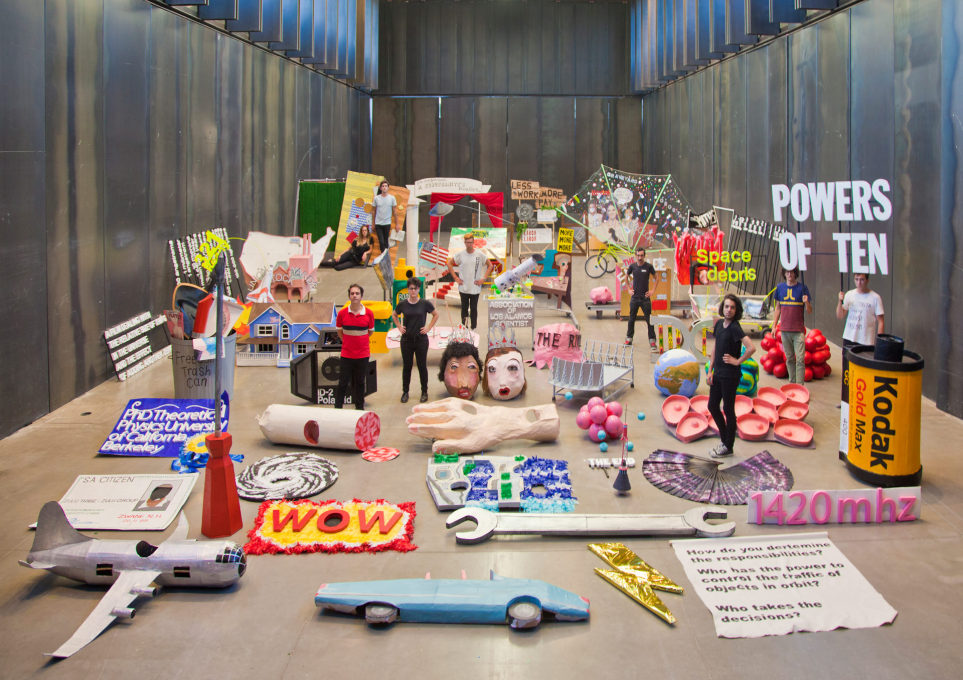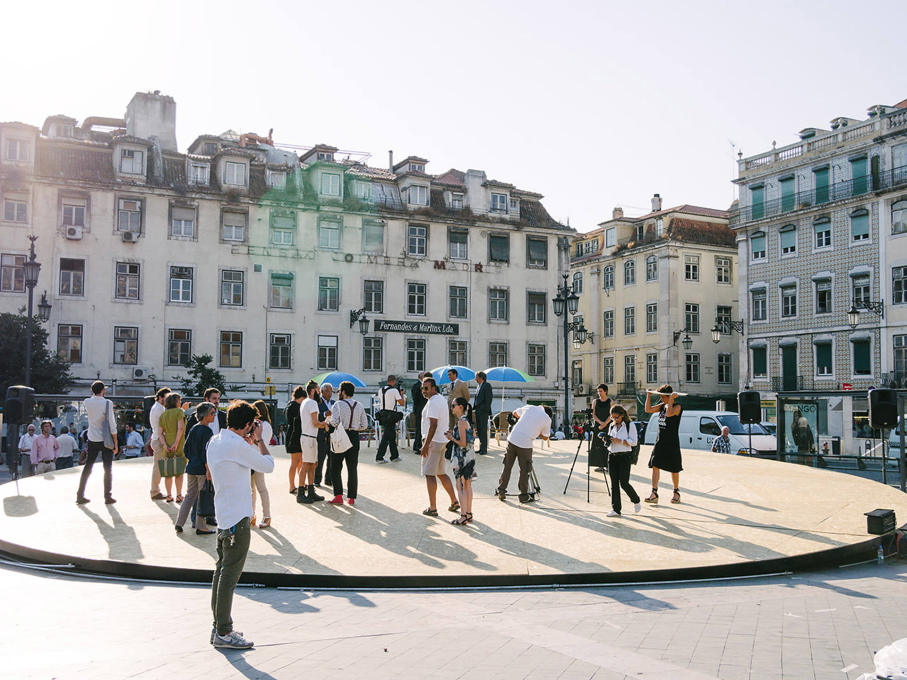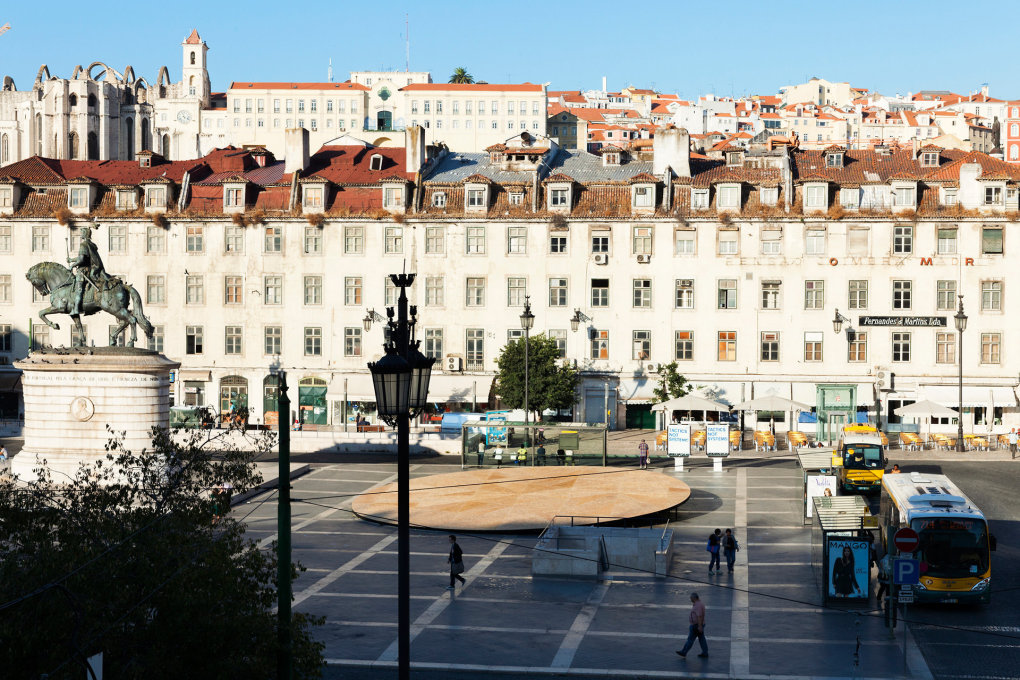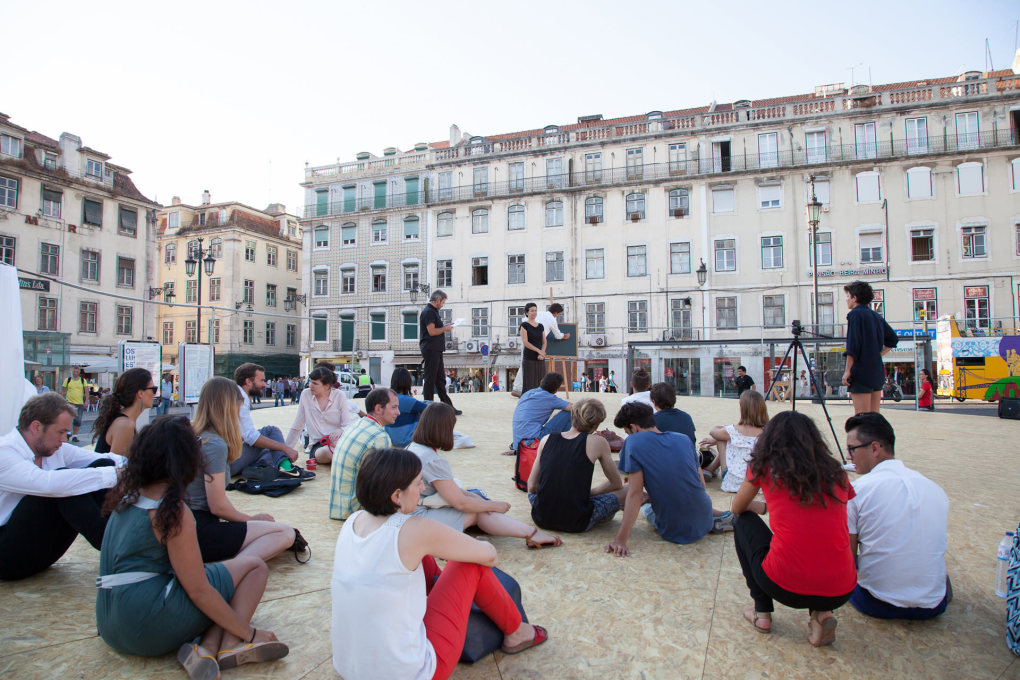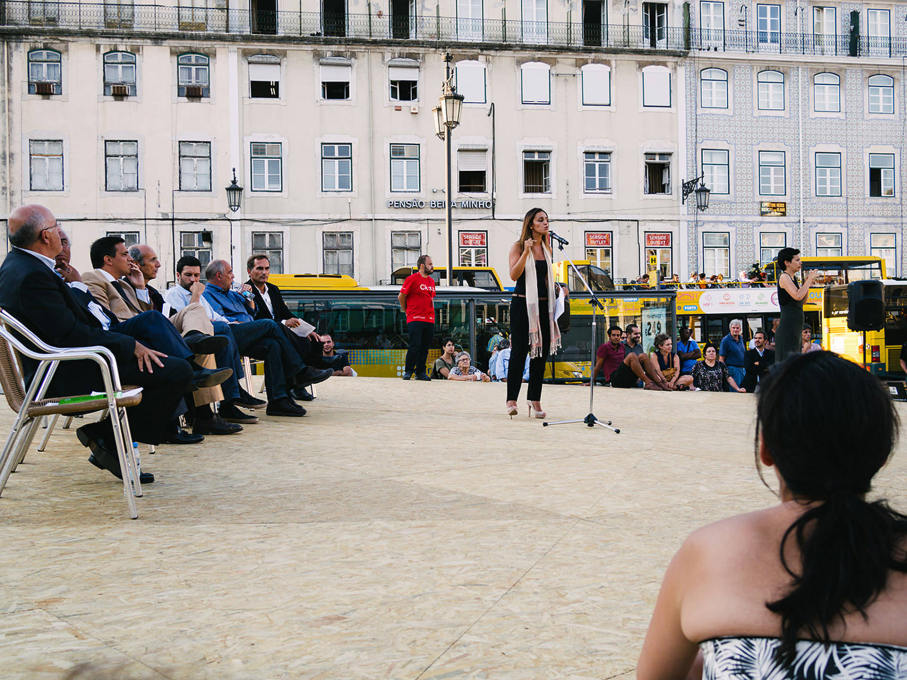Architecture theorist Nick Axel visited the market square performance program at the Lisbon Triennale and found architecture's discourse with politics and the public alive and kicking in the agora.
Community and discourse aggregators like the 2013 Lisbon Architecture Triennale tend to affirm themselves with an odd yet intense mixture of critical self-reflection and subliminal fury of content. In one of its program strands, called New Publics, the often problematic nature of these events’ very foreignness and ephemerality is innovatively treated in such a way that it is transformed into a strength. Curated by José Esparza, the New Publics project is both highly visible and intriguingly obscure; prudent while expressive and potent.
Located in and around one of the central squares in downtown Lisbon Praça da Figueira, the program of New Publics focuses itself on revealing the inherent politics and contingencies of daily life through the institution of a series of frames. The majority of these events during the opening week of the Triennale took place on the tilted platform of the Civic Stage designed by Frida Escobedo, where quotidian rituals became uncanny when presented in a series of performances.

The program began with The Mayoral Act in which the use of a public square as space for political debate was re-consecrated by bringing together all the candidates in the current Lisbon mayoral race to present their policies on architecture and urbanism. Similarly, in Daniel Fernández Pasqual’s Housing Act, local collectives and residents were invited to debate the lack of effective housing rights in Lisbon today, and their possible future implementation. With a sizable attendance of Portuguese citizens at these events, it will be interesting to see if, how, and who beyond local politics will continue to utilize this stage with its performative signification of ‘publicness’.
Against events and openings taking place throughout the city as a part of the larger Triennale, the program on the New Publics stage provided a sense of rhythm and temporality in an otherwise hectic few days. Francisca Benítez, for example, instituted a series of daily sign-language workshops, performing a meta-critique of the implicitly prejudicial use of verbality as the common form of political communication. In the program Speech Acts, architects, artists, sociologists, curators and politicians were invited on-stage to reflect on topics pertaining to the public realm such as leadership, innovation, religion and assembly. Originating as essays in an upcoming ebook, these performances highlighted the relation between discourse and rhetoric by compulsorily pairing the speakers with professional actors, resulting in disciplinary comfort zones often being awkwardly tested live on stage.
The event’s spectacular climax was the premiere of Superpowers of Ten, a full-length theatre play by Andrés Jaque / Office for Political Innovation. Transcoding Charles and Ray Eames’ canonical 1968 film Powers of Ten into a contemporary epistemological ecology, Jaque deconstructs its apparent smooth neutrality, presenting the constructed image as a locus for political agency and consequence. Composed of over 50 set pieces, this visually analog performance imbues the medium of theatre with representational transparency and an affirmation of political responsibility.
Installation-wise, however, after the first week there is not much to see. Aside from the stage itself and a storefront office nearby designed by Artéria, in the downtime between the intermittent program of debates and classes, it exists only in the memories, stories and recordings it engenders. In this though New Publics is similar to much of the programming across this Triennale. Like John Cage’s interpretation of a concert in 4’33” or Marcel Duchamp’s approach to the museum in Fountain, New Publics treats the architecture of public space as the arbitrary yet incessant medium for the performance of society. As such, it critically questions not only the intention behind traditional architectural exhibitions that often make (sub)conscious claims to authorship and permanence through discourse, but also the very means by which architects can and do go about contributing to the public.
– Nick Axel is an unlicensed architect, radical theorist, critical journalist and spatial strategist, currently based in London.




